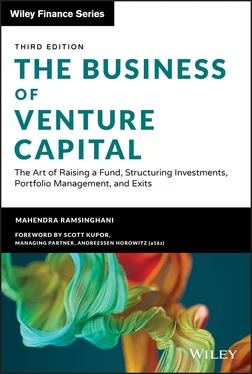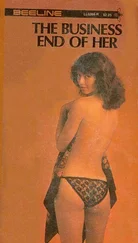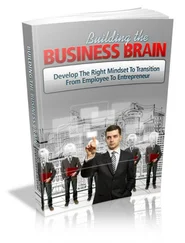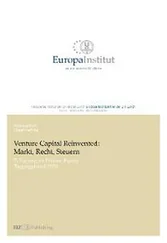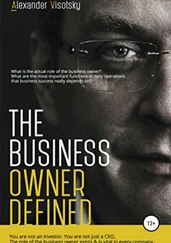7 The VC business model is evolving, but slowly — very slowly. When Fred Wilson was asked how the VC model will evolve in 20 years, he said, “All I know is that it will be different.” He was humble enough to avoid making grandiose predictions. The only significant innovation in the past decade has been that carry has gone from 20 percent to 30 percent for some firms, while losses have worsened. In recent years, we have seen the rise of online platforms to facilitate more transactions and liquidity (AngelList, SecondMarkets) and the use of big-data and AI (just Google “Chris Farmer and SignalFire” and see how his data-driven VC approach can disrupt the disruptors), and the distributed ledger. It can shift the flow of capital from the LP-GP-founder trickle to a game-changing peer-to-peer funding model. Fun times ahead.
Build on these last 50 years of VC legacy and create your own recipe for VC in the next 50 — your own brave new world. And don’t compare yourself to the VC heroes and gods, but carve your own authentic path.
As advertising guru David Ogilvy once said, “Aim for the company of immortals.”
1 1C. P. Cavafy, “Ithaka,” Collected Poems Revised Edition, translated by Edmund Keeley and Philip Sherrard, edited by George Savidis. Translation copyright © 1975, 1992 by Edmund Keeley and Philip Sherrard. Princeton University Press. https://www.onassis.org/initiatives/cavafy-archive/the-canon/ithaka.
2 2 “James 4:13–14,” Holy Bible, English Standard Version UK (London: Harper Collins, 2012).
3 3José Luis A. Fermosel, “Jorge Lui Borges: ‘No estoy seguro de que yo exista in realidad,’” El País, September 25, 1981.
4 4Rudyard Kipling, “If,” Rewards and Fairies. (Garden City, NY: Doubleday, Page & Company, 1910).
5 5Ashwin Rodrigues, “Group of White Men in Patagonia Vests Confused for VC Fund, Raise $500 Million,” Fortune, September 29, 2017.
Each of us bears the imprint
Of a friend met along the way;
In each the trace of each.
For good or evil
In wisdom or in folly
Everyone stamped by everyone.
—Primo Levi
And so, this book bears an imprint of many brilliant minds, friends good and wise. This labor of love would not have been possible without the help of all those who shared their experiences, insights, and wisdom — in sharing tactical and strategic, they also show us how to become better people, living their lives with the precepts of #givefirst. Thank you, Brad, for sharing your knowledge, abundance of spirit, and generosity of the soul. You are, indeed, the silent force that works relentlessly for the greater good, like the Gandhi of Venture Capital. I am deeply grateful to Scott Kupor, managing partner at Andreessen Horowitz (A16Z) and former chairman of National Venture Capital Association. Scott is a gifted and empathetic leader. His big heart and rigorous intellectual engagement have helped and guided many, including me. Having good role models in our business is important, so thank you to all those who spent time with me — too numerous to name — your quotes, wisdom, insights, and fingerprints are all over this book. You have helped shape the minds of investors of tomorrow with your ethos, behavior, blog posts, and tweets.
This book, in its third edition now, has stood upon the shoulders of investor-giants. When the first edition came out a decade ago, I had no idea where all this was going. You, dear reader, have made this journey an absolute delight. I am grateful to you for all the numerous emails, reviews, feedback, and comments for the previous editions. All your kind words are rightfully deserving of the VCs mentioned in this book. They are the lead singers who deserve the applause and gratitude. That I get to hang out with such smart, generous people is a blessing.
Above all, I thank the Great Spirit — the mysterious unknown that inspires and guides us to pursue greater good, gives us the tenacity to stay the course in tough times, and helps us to bring our gifts to society.
Part One The Making of a VC
Most good beginnings in this land of venture capital careers involve some planning, some luck, and not taking yourself too seriously. How does this business work — what does an average day look like — how do you get in and how do you grow — and what are the pitfalls? Is it just about making money — multiplying green pieces of paper and filthy lucre?
Should you try to keep improving every day? “If you are under the impression you have already perfected yourself, you will never rise to the heights you are no doubt capable of,” Kazuo Ishiguro, wrote in his book, The Remains of the Day . It is no wonder that Jeff Bezos, founder and CEO of Amazon, refers to this book as one of his favorites.
What makes a good VC? Is it skill, tenacity, or that mysterious stroke of luck? Is it a network of relationships, or is it market timing? And who decides what is good? If you follow the industry standards, then it's largely returns — cash-on-cash multiples you can generate as fast as you can. That will get you a place on the vanity charts of Forbes Midas List of Venture Capitalists, which can elevate your brand and career prospectus. How do you grow as a person? Should VCs think about their role in society — to support and enhance systems of governance, better education, role of arts, and a healthier environment? Or should we pretend that those problems do not belong to us nor affect us?
As my mama said, never trust anyone who tells you how to get in but does not show you how to get out — be it a swimming pool, a dark cave with supposedly hidden treasures, or the business of venture capital. Hanging out with cool founders every day, discussing the latest bleeding-edge trends, can be fun, even addictive. You need to know how to get out of this business. Alcoholics Anonymous has a 12-step program to recovery — but for investors addicted to the adrenalin rush of cool-tech and exit-highs, there are no support groups. On that note, I have added a chapter on your own exit strategies — just as you get in, you should know how to graciously find your way out of the maze.
1 The Business of Cash and Carry
INTRODUCTION: AN OPERATIONAL PRIMER
For Masayoshi Son, raising a $100 billion Softbank Vision fund was easy. As he quips, it was “$45 billion in 45 minutes” — his 45-minute meeting with Saudi Arabia's crown prince kicked off the fund raise. To the prince, Masa offered a gift. “I want to give you a Masa gift, the Tokyo gift, a $1 trillion gift. Here's how I can give you a $1 trillion gift: You invest $100 billion in my fund, I give you a trillion.” Son left the meeting with a commitment of $45 billion, and other investors followed soon thereafter. The world's largest venture fund was off to the races.
But if raising $100 billion was that easy, the doyens of Sand Hill Road venture firms would have done it long ago. For Softbank, the journey started in the year 2000, with a $20 million investment in Alibaba, a startup that would eventually grow into a Chinese e-commerce giant. Alibaba went public in 2014, and at that time, Softbank's 28 percent stake in the company was valued at $58 billion. Son had also invested in Yahoo! in 1996 and reaped its rewards, following the company's IPO four years later. Son's fascination with the world of technology started with the microprocessor. “When I was 17 years old, the very first time I saw a photo of a microprocessor, it made me cry. I was overwhelmed,” he would say. As the waves of innovation rose and fell, the teeny microprocessor spawned into the World Wide Web in the 1990s, followed by the cloud and mobility a decade later. Son kept surfing along and is poised to ride the next trend — be it technological changes like robotics, automation, and artificial intelligence (AI) or societal changes such as ridesharing, vertical farming, and food delivery.
Читать дальше
